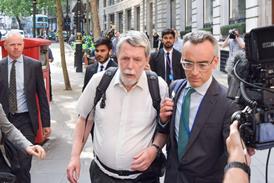Chancellor George Osborne’s autumn statement contained important changes for law firms.
The politics had the big headlines but, as ever with an autumn statement from the chancellor, it is sometimes the detail that is worthy of more attention.
Staff costs
Law firms typically have staff costs as their largest profit-and-loss expense, and so changes to the tax regime applying to some employment expenses are important.
The headline many will have picked up on is the apprenticeship levy to apply from 6 April 2017. This is, in effect, simply an increased employment cost calculated at 0.5% of a firm’s payroll. The first £15,000 of charge is being exempted, and so the levy will only apply to employment costs in excess of £3m per year.
What firms may have overlooked is the proposal to deny tax-free home-to-work travel cost reimbursement for those who are employed through an intermediary. It is intended that this is to be effective from 6 April 2016, with legislation being published this month. The targets are individuals engaged by firms through a personal service company or other intermediaries, who currently claim that they work at a succession of temporary workplaces, or that their home is their work base, meaning that travel to the office is business travel rather than home-to-work travel.
There are a couple of areas where firms could themselves be caught out by the changes. Included is a potential transfer of PAYE debt provision where expenses are paid tax free post April 2016, where the firm engages an intermediary and the intermediary does not operate the new rules.
A firm could also be affected if it employs its staff through a service company. In this case, a service company will be an intermediary and the new legislation will apply to the expenses paid to the firm’s staff. Where it gets difficult is in the definitions of temporary or permanent workplaces. If a firm employs a lawyer in its London office through a service company, and then seconds that member of staff to its Birmingham office for six months, then the Birmingham office becomes the permanent workplace for that employee of the service company. Any travel costs from London to Birmingham reimbursed become a taxable benefit on the employee. This would not be the case if the employee had been employed through the main firm rather than through a service company, so they would have been able to use the 24-month secondment rule to allow the expense to be tax free.
Firms who second staff to a client may face the same issue even where a service company is not involved.
So firms are going to need to analyse the legislation when it comes out, along with the specifics of each secondment, to ensure they are not caught out by these new travel and subsistence rules.
Firms will no doubt be reviewing the rationale for their service company in the spring anyway. The increased rates of tax on dividend income from 6 April 2016 mean that it may no longer be tax-efficient to employ staff through a service company from that date.
Gift Aid
On Gift Aid rules it is unhelpful that the chancellor has not taken up the OTS (Office of Tax Simplification) request for Gift Aid procedures to be made more straightforward for firms. The OTS, in undertaking a review of partnership taxation, thought that there was scope for improvement in this area. Unfortunately, that review prompted HM Revenue & Customs to look again at its existing concessionary treatment for partnerships and LLPs.
At present HMRC allows one partner to sign a Gift Aid declaration on behalf of all partners. HMRC has concluded that this is contrary to the requirements of the Gift Aid legislation.
Therefore, from 6 April 2016, if a firm makes a donation to a qualifying charity, Gift Aid treatment will only apply if the Gift Aid declaration lists all partners, their individual share of the donation, their home address and is signed by each partner confirming that they are personally at least a basic rate taxpayer.
Pension scheme contributions
As announced earlier this year, the tax rules on pension scheme contributions and accumulated funds are changing on 6 April 2016. Partners are going to need to spend the Christmas break revisiting their long-term financial planning.
As a reminder, the £40,000 Annual Allowance will reduce on a tapered basis for those earning in excess of £150,000 down to an allowance of only £10,000 for those earning £210,000 or more. Pension contributions can be made in excess of the allowance but all tax relief will be clawed back on the excess.
Additionally, the Lifetime Allowance is due to reduce from £1.25m to £1m on 6 April 2016. When a partner starts to draw a pension (or make a lump sum withdrawal) from their fund, then an additional tax charge arises if their pension fund value exceeds the Lifetime Allowance at that withdrawal. It will be possible for partners to make an election to retain a Lifetime Allowance of £1.25m for their own pension fund, but the election is only valid if they make no further pension contributions after 5 April 2016. Partners need to consider whether they maximise their pension contributions by 5 April 2016 and then make a Lifetime Allowance election.
Property
Investment in property is a classic alternative investment that partners make when they do not wish to invest further into their pension scheme. The fresh and surprising news for partners themselves will have been the additional 3% SDLT charge on second (or more) residential property acquisitions, thus catching the purchase of holiday homes, a mid-week flat or buy-to-let properties from 6 April 2016.
This year’s autumn statement returned to the previous tradition of being focused on government spending, rather than tax raising. However, there were still some important details it is crucial for firms to absorb, to prevent being caught out by the changes.
Louis Baker is head of professional practices at Crowe Clark Whitehill

















![Eleanor Clarke - 029[8]](https://d1d8vslyhr7rdg.cloudfront.net/Pictures/274x183/1/5/1/120151_eleanorclarke0298_527574_crop.jpg)











No comments yet